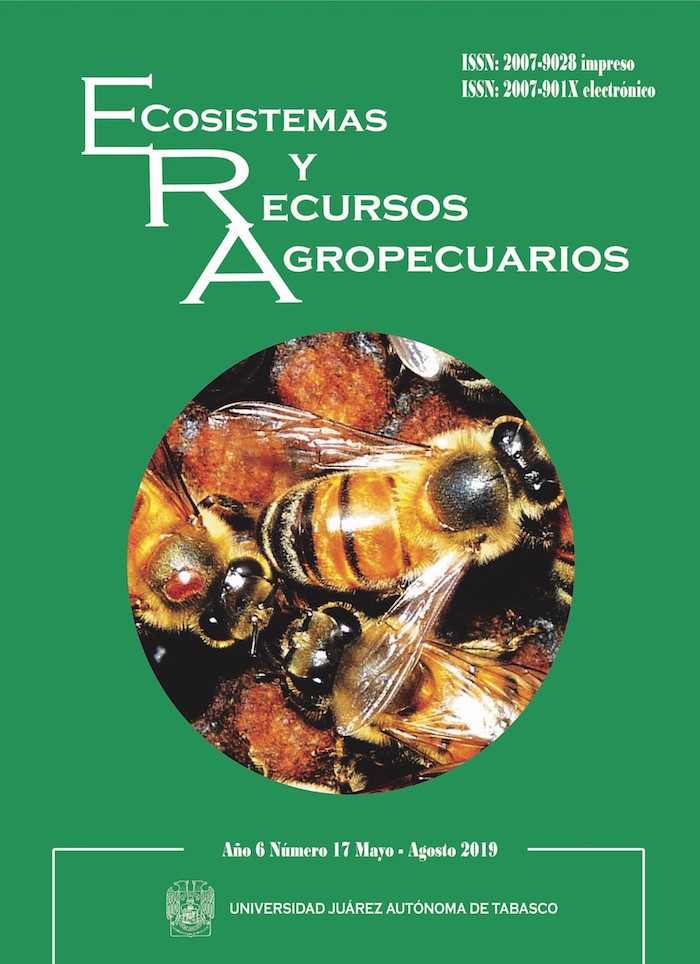Climate change indicators software for computing climate change indices for agriculture
DOI:
https://doi.org/10.19136/era.a6n17.1770Abstract
Climatic anomalies affect agricultural production, so the identification of climate change at the local level is a pressing task. The Intergovernmental Panel on Climate Change (IPCC) has generated indices that allow the identification of extreme climate events. Recent studies of weather and climate variation have increasingly used the climate extreme indices defined by the IPCC. This article dwells upon the ICC (climate change indicators) software written in the Java language which is a convenient tool for storing and processing large sets of daily weather data. The software allows the calculation of 27 climate change indices and four indices for growing vines. Built-in analytical tools help identify trends and climate anomalies on different time intervals. The application is additionally supplied with important functionality for statistical data processing and visualization. Tools that help analyzing climate change can foster wiser strategic decision-making in the management of agriculture and ecosystems.
Downloads
References
Alexander L, Yang H, Perkins S (2013) ClimPact. Indices and software. World Climate Programme, New South Wales University of Technology. 52pp.
Bautista F, Pacheco A, Ayala G (2015) Indicadores de cambio climático con datos diarios. D.F., México, Skiu. 59pp.
Beniston, M (2008) Extreme climatic events and their impacts: examples from the Swiss Alps. In H. F. Díaz, & R. J. Murnane, Climate extremes and society. Cambridge University Press, pp 147-164. New York.
Gbegbelegbe S, Chung U, Shiferaw B, Msangi S, Tesfaye K (2014) Quantifying the impact of weather extremes on global food security: A spatial bio-economic approach. Weather and Climate Extremes 4: 96-108
Gladstones J (2002) Viticulture and environment. Adelaide, Winetitles. 310pp.
Herrera LL (2014) RClimTool User Manual. Clima y sector agropecuario Colombiano.
Heim R (2015) An overview of weather and climate extremes – Products and trends. Weather and Climate Extremes 10: 1-9.
IPCC (2007) Climate change 2007: the physical science basis. Cambridge University Press, Cambridge, United Kingdom and New York, NY, USA. 104pp.
Jahn M (2015) Economics of extreme weather events: Terminology and regional impact models. Weather and Climate Extremes 10: 29-39.
Karl TR, Nicholls N, Ghazi A (1999) CLIVAR/GCOS/WMO workshop on indices and indicators for climate extremes: Workshop summary. Climate Change 42: 3-4.
Kendall MG, Gibbson JD (1990) Rank Correlation Methods, 5th edn. Oxford University Press, New York.
Ortiz-Solorio CA (1987) Elementos de agrometeorología cuantitativa con aplicaciones en la república mexicana. Departamento de Suelos, Universidad Autónoma de Chapingo (UACH), México.
Peterson TC (2005) Climate Change Indices. World Meteorological Organization Bulletin. 54: 83-86.
Shannon HD, Motha RP (2015) Managing weather and climate risks to agriculture in North America, Central America and the Caribbean. Weather and Climate Extremes 10: 50-56.
Snyder RL, De Melo-Abreu JP, Matulich S (2005) Frost protection: fundamentals, practice and economics, FAO.
Sen PK (1968) Estimates of the regression coeficient based on Kendall's tau. Journal of the American Statistical Association 63: 1379–1389.
Winkler AJ, Cook JA, Kliewer WM, Lider LA (1974) General Viticulture. 4th edn. Berkeley, CA: University of California Press.
Yan Z, Jones PD, Davies TD, Moberg A, Bergstrom H, Camuffo D, Cocheo C, Maugeri M, Demarée GR, Verhoeve T, Thoen E, Barriendos M, Rodríguez R, Martín-Vide J, Yang C (2002) Trends of extreme temperatures in Europe and China based on daily observations. Climate Change 53: 355-392.
Zhang GX, Yang F (2004) RClimDex (1.0) User Manual. Climate Research Branch Environment, Canada, Downsview.
Published
Issue
Section
License
Aviso de copyright
Los autores que se envían a esta revista aceptan los siguientes términos:
una. Los autores conservan los derechos de autor y garantizan a la revista el derecho a ser la primera publicación del trabajo con una licencia de atribución de Creative Commons que permite a otros compartir el trabajo con un reconocimiento de la autoría del trabajo y la publicación inicial en esta revista.
B. Los autores pueden establecer acuerdos complementarios separados para la distribución no exclusiva de la versión del trabajo publicado en la revista (por ejemplo, en un repositorio institucional o publicarlo en un libro), con un reconocimiento de su publicación inicial en esta revista.
C. Se permite y se anima a los autores a difundir su trabajo electrónicamente (por ejemplo, en repositorios institucionales o en su propio sitio web) antes y durante el proceso de envío, ya que puede conducir a intercambios productivos, así como a una cita más temprana y más extensa del trabajo publicado. (Consulte El efecto del acceso abierto).

